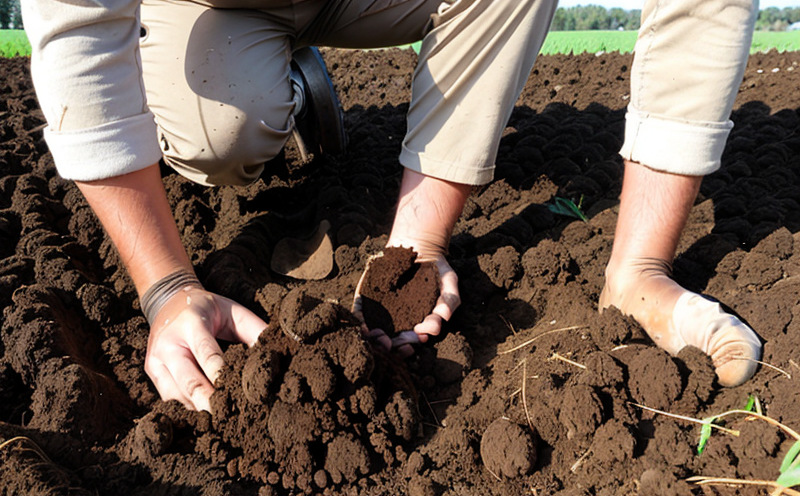Soil Ammonium-Nitrogen Testing
In agriculture and forestry testing, soil quality and fertility are critical factors that influence crop yield, plant health, and overall sustainability. One key parameter in assessing these aspects is the presence of ammonium-nitrogen (NH4+), which plays a crucial role in nutrient availability for plants. Ammonium nitrogen can be found naturally in soils but its levels often fluctuate due to environmental conditions or agricultural practices.
Ammonium-Nitrogen testing is essential for ensuring optimal soil fertility and crop growth. By measuring the concentration of ammonium ions, farmers and agronomists can make informed decisions about fertilization strategies, irrigation management, and overall land use planning. This service helps in maintaining balanced soil chemistry, which directly impacts agricultural productivity.
The testing process involves collecting representative soil samples from various fields or forests based on defined protocols. These samples are then analyzed using advanced analytical techniques such as ion chromatography (IC) or colorimetric methods. The results provide precise concentrations of ammonium-nitrogen, enabling accurate assessments and targeted interventions.
The importance of this testing cannot be overstated for sustainable agricultural practices. It allows for the optimization of nitrogen use efficiency by avoiding over-fertilization, which can lead to environmental issues like water pollution and increased greenhouse gas emissions. Moreover, it helps in reducing costs associated with unnecessary chemical inputs while enhancing soil health.
For quality managers and compliance officers, understanding ammonium-nitrogen content is vital for meeting regulatory standards set by bodies such as the European Union (EU) and the United States Environmental Protection Agency (EPA). These regulations aim to protect both human health and ecosystems from harmful effects of excess nitrogen compounds.
In R&D settings, soil ammonium-nitrogen testing supports ongoing research into sustainable agriculture techniques. It provides valuable data for developing new fertilizers or improving existing ones by optimizing their formulation based on specific field conditions.
For procurement professionals involved in sourcing agricultural inputs, knowing the baseline levels of ammonium-nitrogen allows them to select products that best suit particular soil types and crop requirements, thereby ensuring efficient resource utilization throughout the supply chain.
Applied Standards
The testing methods for measuring soil ammonium-nitrogen follow established international standards including ISO 17259-3:2014 and ASTM D6860-15. These guidelines provide clear procedures for sample preparation, extraction processes, analytical techniques, and interpretation of results.
- ISO 17259-3:2014 – This standard specifies the procedure for determining ammonium in agricultural soils by ion chromatography. It outlines detailed steps from sample collection to final quantification, emphasizing accuracy and precision.
- ASTM D6860-15 – This American Society for Testing and Materials method describes a colorimetric procedure for measuring ammonium in soil extracts. The protocol details various parameters affecting the test outcome, such as pH adjustment and reagent selection.





